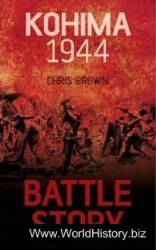Culture history A history of the cultures that inhabited a particular location or region. descent Hereditary derivation or lineage. ethnicity A form of communal identity that emphasizes common ancestry and an association with a territory. hybridity A description of the inevitably mixed, interpenetrated condition of cultures, languages, etc. material culture Human modifications to natural resources and the environment.
Race A population distinguished as different from others based primarily on physiology. Genetic studies suggest there are no legitimate ways to divide the human population based on such characteristics, rather the existence of races is a social rather than a true physical phenomenon.
Ethnicity, as a topic of concern for archaeologists, has its roots deep within the history of thought about human difference. Although the term itself is relatively new (arriving in English language dictionaries in the 1950s), the idea is old, derived as it is from the ancient Greek term ethnos, which roughly meant ‘various different groups of peoples’. The journal Ethnos, which began publication in 1936, is a testament to the anthropology’s long engagement with such difference. As it is currently theorized, ethnicity is a form of group identity separable from other communal identities, such as class or religion, by emphasis on common ancestry and an association with a territory, both of which may be based in some deep, perhaps mythic past. Other characteristics that ethnic groups often exhibit are a collective name, a shared history, elements of common culture, and a sense of communal solidarity. The concept overlaps a great deal with ideas of race based as it is on at least supposed shared ancestry. Nineteenth-century discussions of differences based on ethnicity as defined above, often used the terminology of race, something currently associated primarily with physiological differences. Thus, archaeological investigations of race and racism share a great deal with those primarily focused on ethnicity. A general consensus exists among anthropologists that, for ethnic identity to have salience, group members must have an awareness of peoples outside of the group. Some anthropologists suggest that ethnicity is a relatively modern social construction, one that exists only in relation to state-level societies. Others claim that, because cultures have always been in contact with other groups through relations such as trade or marriage, the conditions which foster ethnic identity are essentially universal.
Every archaeologist who has studied ethnicity has relied on the existence of a significant relationship between material culture and ethnicity. As so deftly laid out by Siiin Jones in The Archaeology ofEthnici-ty, how archaeologists have conceptualized that relationship has a great deal to do with their ideas about culture. When they believe that cultures are bounded, homogeneous entities, archaeologists easily equate different suites of material culture with different groups in the past. The building of culture histories around the world relied upon this unproblematized relationship, one expressed in many terms we still use for prehistoric peoples, such as the Basketmakers of the Southwestern United States, or the Beaker people of Europe. However, other archaeologists conceptualize cultures as having porous boundaries, comprised of multifaceted individuals with potentially conflicting goals. Increasingly those who study ethnicity conceptualize it as intimately tied to age, gender, status, and other elements of identity. Such researchers expect that people with different social positions within an ethnic group may engage with material culture in very different ways. This view of culture leads archaeologists to pay attention to a range of material culture that those with a normative view might dismiss as random variation.
Early approaches to past peoples relied on what has been termed ‘primordialism’, or a belief that similarities in the cultural expressions of members of various ethnic groups lie in the sameness of shared experience. In the wake of various ethnic political movements that often relied on the mobilization of cultural symbols, came Ethnic Groups and Boundaries in 1969. The editor of the book, Fredrik Barth, posited that ethnic identities are tools created during crisis and often mobilized to political or economic ends. This position, which has since been coined ‘instrumentalist’, suggests that ethnicity is a form of invented tradition rather than an expression of shared practices of significant time depth. The decades that followed the publication saw anthropologists of all stripes expending a good deal of energy investigating these two models of ethnicity. Historical archaeologists often embraced the study of ethnicity, especially those who were in the position to research the material remains of documented locales such as plantations, where identity was forged from the crucibles of cultural struggle. Ethnoarchaeological research investigated how much variation in the style of artifacts could be accounted for by different social groupings. Various investigations suggested that some artifacts reflect passive style or cultural norms of the proper way to produce an item, an idea that fits with primordialism. Other items, however, have active style intended specifically to mark social differences, something expected by an instrumentalist view of ethnicity. It is clear, however, that there is no absolute boundary between passive and active style, as an artifact that in one generation is shaped by taken-for-granted norms can become actively manipulated in the next. A middle-ground position, that ethnicity has both primordial and instrumental characteristics, is held by many twenty-first-century practitioners.
How researchers operationalize the concept of ethnicity highlights some of the critical themes in a twenty-first-century archaeology of ethnicity. Given that the term ethnos derives originally from ancient Greek, it seems appropriate to turn to research on the poleis (city-states) of ancient Greece and their colonies. Many ancient Greek poleis were comprised of a number of cultural groups. Texts of Greek origin myths help to establish that these collective identities were in fact ethnic, and were mobilized in continuing proclamations of group distinctiveness. As investigated by Jonathan Hall, a number of groups coupled these discursive strategies of ethnic identification with material ones. Both Greeks in Cyprus and the Akhaians of southern Italy expressed their identity materially, particularly through distinctive architecture. Other groups used the built environment to reinforce their link to mythic ancestors and the territories with which they were associated. For example, the Dryopes legitimized their claim to Asine by participating in the cult of Hera, the earlier, Bronze Age goddess of the Argive plain in which Asine was located. They also reused local Bronze Age tombs for their own inhumations. These are acts Hall classifies as ‘ancestralizing,’ strategies he suggests to be common among ethnic groups, because descent is often a critical element of this form of collective identity.
It is illustrative to couple these studies of identity within the Greek poleis with those conducted in far-flung colonies. For example, in Berezan, a Greek colony in the northern Black Sea, the earliest traders lived in housing very similar to that of the majority Scythian population. Interestingly, the distinguishing architectural elements of the colonists’ houses were interior heating systems, something that reflects their struggles to adjust to a colder climate. This is an embodied element of their ethnic identity linked to the environmental differences between their homeland and their new territory and very unlikely to be an instrumental expression of personhood. These early traders were later joined by a wave of Greek immigrants, who as documentary and ceramic evidence suggests were largely Ionian. They lived in above-ground houses that reference a pan-Hellenic rather than Ionian form. One imagines that in Berezan, the most pertinent axis of ethnic identification was Greek/Scythian; thus, colonists did not mobilize around their internal Greek identity as Ionians. This case study highlights a critical element in the archaeology of ethnicity, namely that ethnic identity is both contingent and fluid, and thus our investigations must pay careful attention to the context in which material remains were a part.
Like many archaeological investigations of identity, both of these are examples where researchers have access to some form of written documentation. However, aided by technological breakthroughs such as the sourcing of materials and DNA analysis, researchers are interpreting ethnicity among prehistoric populations with growing confidence. For example, the traditional culture areas of the prehistoric southwestern United States have recently come under scrutiny, revealing numerous examples of migration, intermarriage, and ethnogenesis. These studies indicate that the region has long been host to various forms of ethnic hybridity, a condition which post-Colonial theorists suggest is the norm for humanity.
See also: Engendered Archaeology; Identity and Power.




 World History
World History









